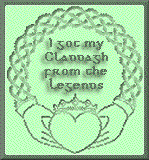
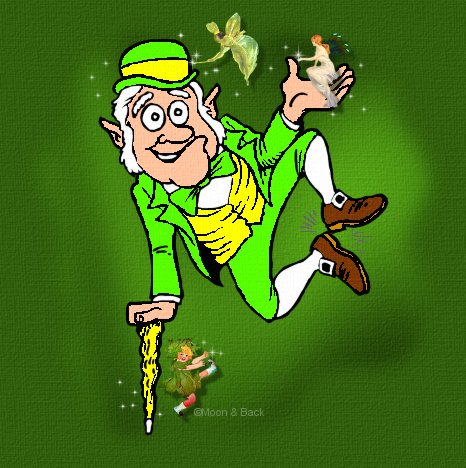
Wearin' O' The Green
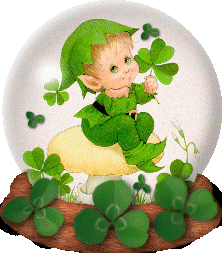
Wearin' o' the green, especially on St.
Patrick's Day is considered to be both lucky
and an act of paying respect to Ireland.
School children started the tradition of
pinching those who failed to wear green on
St. Patrick's Day
(to help start their lack of good luck, I suppose).
Green is the Irsih national color,
symbolic of the lush green landscape
of the Emerald Isle.
Green is also the color of another
St. Patrick's Day symbol,
as well as an Irish national symbol,
the shamrock.
Legend says that the shamrock was chosen
as the national symbol because of
St. Patrick's teachings,
using the shamrock as an illustration of
the concept of the Trinity,
but it was acutally chosen because of it's
likeness to a cross.
By the way,
should you find a four leaf clover on
St. Patrick's Day,
it's reported to carry twice the
amopunt of good luck and fortune!

Legends tell of the young Bishop Saint Patrick,
who plucked a simple,
humble shamrock from the ground
somewhere on the lush green hillsides of
County Armagh back in the year 432 AD.
He used it to explain the
Mystery of the Blessed Trinity
to the Ancient High Kings of Ireland,
making the Shamrock an important
symbol as Ireland's National Emblem.
It is also said that Saint Patrick
drove the snakes from Ireland into the sea.
St. Patrick is named the patron
Saint for bringing Christianity to Ireland,
and introducing the Irish people to Baptism.
That is why March 17th is now celebrated
as the "Feast Day Of Saint Patrick",
when Irish people from all over the
world traditionally wear
the shamrock on their chests,
hence the phrase
"The Wearing Of The Green".
Saint Patrick's death on March 17,
in about 461, has been observed in
America since colonial days.
A popular recipe at this
observance is Corned Beef & Cabbage.



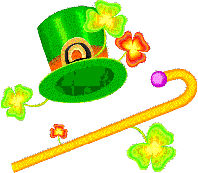
An Irishman's Philosophy
There are only two things to worry about:
Either you are well or you are sick.
If you are well, then there is nothing to worry about.
But if you are sick, there are two things to worry about:
Either you will get well or you will die.
If you get well, then there is nothing to worry about.
But if you die, there are two things to worry about:
Either you will go to heaven or you will go to hell.
If you go to heaven, then you have nothing to worry about.
But if you go to hell, you'll be so darn busy shaking hands
with all your friends, then you won't have time to worry!
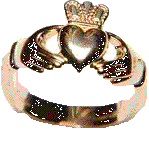
The Claddagh Ring is a very old Irish symbol.
Misty fables surround one
of Ireland's unique treasure,
"The Claddagh"
a symbol of love, friendship and loyalty.
Some 400 years ago in a fishing village called
Claddagh overlooking Galway Bay,
close to the City of the Tribes,
lived Richard Joyce a Master Goldsmith.
It was he who crafted this now famous
design that has become part
of our unique heritage.
The ring worn on the right hand,
crown turned inward tells
your heart is yet unoccupied,
worn with the crown turned outwards
reveals love is being considered.
Worn on the left hand the crown turned
outwards shows all,
your heart is truly spoken for.
The "Claddagh Ring" by
tradition and luck is always
given as a gift.








